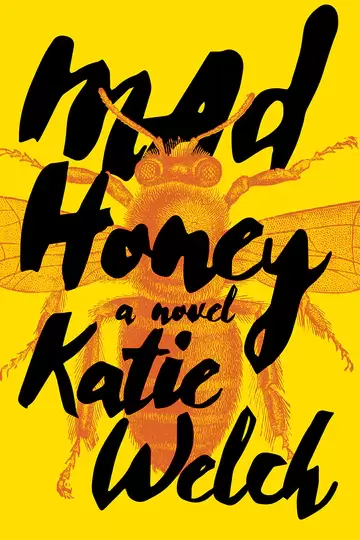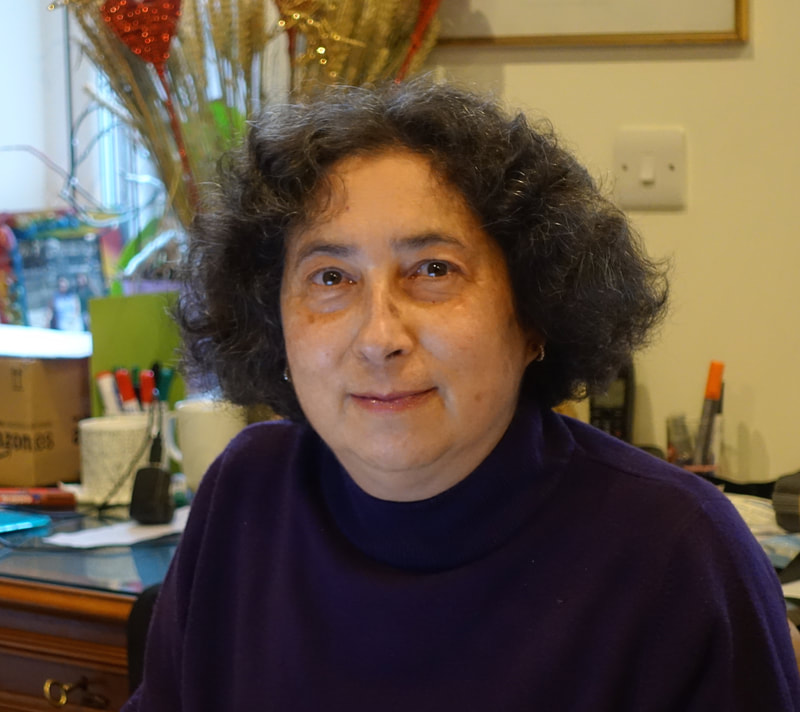Mad Honey
Reviewed by Carla Scarano D'Antonio
|
|
An absorbing natural world interweaves with family secrets and a search for identity in the enthralling new novel by Katie Welch. Close observation of nature in a farm in Lanark, rural Ontario, beekeeping and the complex mysteries of the human and non-human world develop in well-crafted prose. Detailed descriptions and striking imageries convey a profound understanding of humanity as well as of the environment, constructing a captivating story that grips the reader from page one until the end of the novel, alternating personal histories, mysterious plots and the magic of the beehive.
Katie Welch’s first novel, The Bears, addressed environmental issues as well. The story is about the spill from a pipeline in British Columbia and how the animals are affected by its disastrous consequences. Welch is an environmental activist who teaches music and writes fiction. She spent her childhood in Ottawa, studied English literature at the University of Toronto and now lives in British Columbia. She is committed to the problems of climate change and global warming and is aware that the human influence on the natural world is causing catastrophes. For example, the fires in the summer of 2021 in British Columbia burned down whole towns, such as Lytton. She thinks that we have a moral obligation to protect nature and animals and that we should fight against climate change, biodiversity loss and deforestation. The characters in her stories are therefore conscious of these issues in a world that is rapidly changing and in which they are trying to find their way at personal and global levels, which are completely connected. Welch writes from experience, as all writers do. For this reason, she visited the Lanark region and the organopónicos, traditional organic farms, in Cuba while she was drafting Mad Honey. She also inspected beehives while high on LSD, which gave her the magical experience of living temporarily as a bee. Welch actively protested against cruise missile testing in Alberta and against deforestation and spent some of her summers planting trees. Her everyday life therefore goes hand in hand with her commitment as a writer whose aims are witnessing and uncovering truths. Not by chance, among her favourite authors you will find Tolkien, C.S. Lewis, A.S Byatt, George Eliot, Philip Pullman and J.K. Rowling. The attention she gives to Margaret Atwood’s work stands out, implying Welch’s concern with environmental, personal and social issues regarding displacement and identity, as well as with a possible natural disaster that may affect our life on the planet. Mad Honey explores these arguments alongside close scrutiny of the characters’ stories and their development throughout the novel. Melissa Makepeace, the protagonist, is the owner and the boss of Hopetown farm. Her father, Charlie, left for no apparent reason when Melissa was ten, so her mother, Jill, a shrewd businesswoman, ran the farm by herself with the help of Joseph, the farm hand, and seasonal workers. Jill also adopted a young girl, Daphne, who became Melissa’s half-sister and an extra hand on the family farm. Because of her father’s absence, Melissa developed several nervous tics and a lack of self-confidence during her teenage years but was by then completely taken by the farm work. When her mother decided to have a New Age experience in Guatemala and Ecuador visiting sustainable farms and exploring her creativity, Melissa had to take charge of the farm. Other prominent characters are Marjorie, an older lady who lives on a farm nearby and keeps beehives, and Beck, a young man who helps on the farm as a beekeeper and becomes Melissa’s lover. Beck has mixed origins. His father, Matthew Wise, is a white Canadian photographer who is interested in farms and organic cultivation. His mother, Eurydice, is Cuban and is part of Santería (The Way of the Saints), a spiritual sect that believes in deities called orishas and Catholic saints. They live in a cabin in Lanark during the summertime and move to Cuba in the winter. The different characters form a community of sorts that interact with one another, though from a distance. Honeybees are the central point around which the whole story rotates and spirals. Their abundant production of honey, their habits of coming and going and their final disappearance after an accident are crucial to the self-consciousness and development of the characters. The novel suggests that understanding the lives of bees and the natural world in general is the way to understand ourselves and our place on the planet. At the beginning of the novel, Beck finds himself in his parents’ cabin, almost unconscious, starving and having hallucinations about being a bee and living in a beehive. We know he left the farm at the beginning of summer and has been missing for three months. When he comes back, he does not remember where he was and he keeps having hallucinations about being a bee. His mother believes he has the power to speak with animals and maybe metamorphosise temporarily into one, but his father takes him to a doctor in Toronto for some checks. The story develops in mysterious paths via a police investigation with a Canadian gothic atmosphere. The final truths are skilfully revealed at the end of the novel, keeping the suspense high during the storytelling. The mystery of the disappearance of Melissa’s father is also solved at the end with an unexpected final twist. The mystery plots interweave with the everyday life at the farm, which is described with realism and expertise. The main characters are deftly formed, revealing their strengths and weaknesses, which make them human and appeal to the reader. They do not pretend to be perfect but show their flaws and develop their strengths by being themselves despite losses and traumas. The whole story covers the period of a year, from summer to summer, ending with a renewed celebration of hopefulness, symbolised by the final Harvest banquet, which is cemented in honest and trustful relationships and in hope for better future. ‘Better days accumulate’ and ‘Everything’s going to change’, Melissa remarks. The novel ends with the conference of Professor Barbara Beauchemin and a documentary on bees. She is a mathematician who studies quantum physics related to bees and the waggle dance the insects perform to communicate the location of food sources to their companions. The theory is fascinating and implies the possibility that bees are sensitive to the quantum world of quarks. Mad Honey is a gripping story that explores the human and natural world in which ‘everything is part of everything’. Melissa and Beck are finally able to understand and solve their family secrets and acknowledge their past traumas. As Melissa says at the end of the novel, ‘nothing can stay the same’, a truth that sticks to their lives and to the reader. Carla Scarano D’Antonio lives in Surrey with her family. She obtained her Degree of Master of Arts in Creative Writing with Merit at Lancaster University in October 2012. Her pamphlet Negotiating Caponata was recently published by Dempsey & Windle (2020); she has also self-published a poetry pamphlet, A Winding Road (2011). She has published her work in various anthologies and magazines, and she has recently completed a PhD on Margaret Atwood’s work at the University of Reading. In 2016, she and Keith Lander won first prize in the Dryden Translation Competition with translations of Eugenio Montale’s poems. She writes in English as a second language.
|


